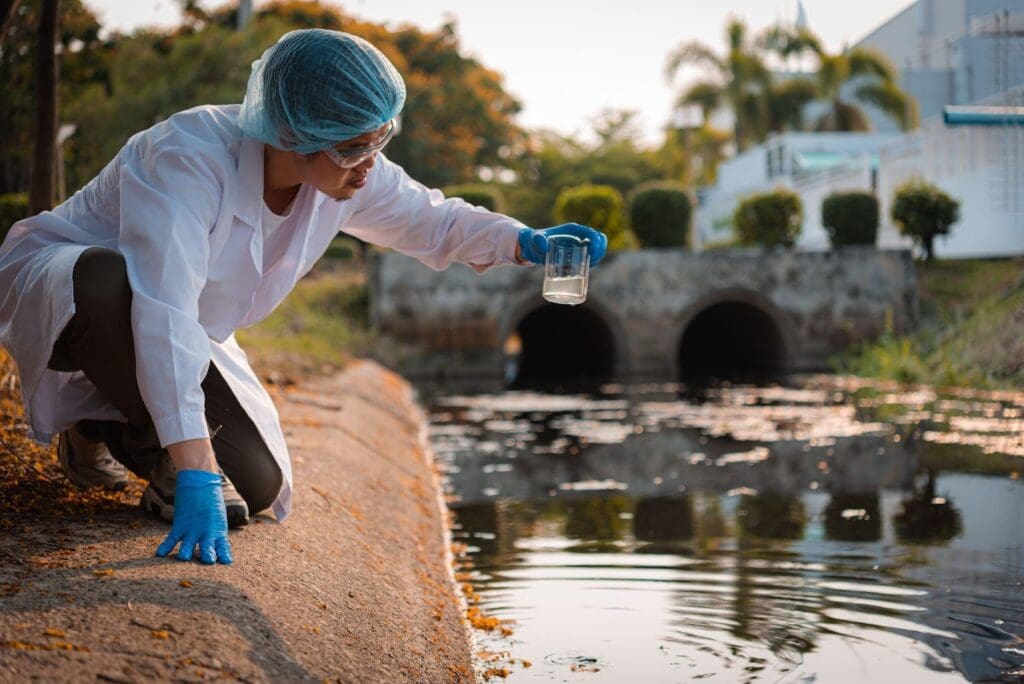
The ongoing regulation of hazardous chemicals requires that lists and databases be updated to reflect new understanding about chemicals and their health and environmental effects.
The candidate list for substances of very high concern (SVHCs) is the primary guide to restricted chemicals within the European Union, with the intent to progressively phase out hazardous substances with efficacious alternative substances that are less detrimental to human health and the environment.

Read on to find out more about the SVHC candidate list, your obligations within the EU, and nine hazardous chemicals to keep on your radar in 2023.
The SVHC Candidate list is just one of many regulatory measures aimed at protecting users from the effects of hazardous chemicals. It is a collection of chemical substances nominated by the European Chemicals Agency (ECHA) and/or its EU Member State representative authority to be included in the REACH’s Annex XIV list (REACH regulation EC No 1907/2006, Article 59 (2) - (10)).
REACH’s Annex XIV list (aka “The Authorisation List”) specifies chemical substances which have been banned from the EU market and being used in products supplied to the EU market following the substance’s authorisation “sunset date,” unless special permission has been granted.
The SVHC targets chemicals which affect human health and the environment—namely carcinogenic, mutagenic, and reproductive toxins (CMRs), substances with persistent, bio-accumulative, and toxic (PBT) characteristics, endocrine disrupting chemicals, or substances “for which there is strong evidence of probable serious effects to human health or to the environment.”

CMRs are chemicals which are suspected to cause cancer, genetic mutations, reproductive or birth defects. PBTs are chemicals which are persistent (difficult to break down and highly resistant to degradation), bio-accumulative (accumulate within the tissues of living organisms, with removal of these chemicals by the body occurring slowly or not at all), and toxic (capable of causing death or illness). Chemicals which are very persistent and very bio-accumulative are known as vPvBs. The long-term effects of PBT and vPvB substances are difficult to predict. Once they are dispersed in the environment, exposure to these substances is very difficult to reverse.
For more information about the nomination process for SVHC candidate chemicals, visit our Mini Brief on this same topic.
The following chemicals have been newly identified as being substances of very high concern, bringing the list total up to 233 entries.
| Substance name | Reason for inclusion |
| 1,1'-[ethane-1,2-diylbisoxy]bis[2,4,6-tribromobenzene] | vPvB |
| 2,2',6,6'-tetrabromo-4,4'-isopropylidenediphenol | Carcinogen |
| 4,4'-sulphonyldiphenol | Reproductive toxin, endocrine disruptor for humans and environment |
| Barium diboron tetraoxide | Reproductive toxin |
| Bis(2-ethylhexyl) tetrabromophthalate covering any of the individual isomers and/or combinations thereof | vPvB |
| Isobutyl 4-hydroxybenzoate | Endocrine disruptor |
| Melamine | Equivalent level of concern having probable serious effects to human health and the environment |
| Perfluoroheptanoic acid and its salts | Reproductive toxin, PBT, vPvB, equivalent level of concern having probable serious effects to human health and the environment |
| Reaction mass of 2,2,3,3,5,5,6,6-octafluoro-4-(1,1,1,2,3,3,3-heptafluoropropan-2-yl)morpholine and 2,2,3,3,5,5,6,6-octafluoro-4-(heptafluoropropyl)morpholine | vPvB |
Information about these chemicals have been updated in Chemwatch’s Galleria Chemica regulatory database so that our clients can be informed of the risks, which can then be managed for customers and consumers within the EU.
Under the REACH Regulation, companies have legal obligations when their substance is included in the Candidate List.
Any supplier of articles containing a Candidate List substance above a concentration of 0.1% weight by weight must provide sufficient information to their customers to ensure safe use. They will have six months from its inclusion in the list to notify ECHA, and they will need to provide their customers with a safety data sheet.
These substances may be placed on the Authorisation List in the future—companies will need to apply for permission from ECHA to continue using them.
Suppliers of articles on the EU market containing Candidate List substances in a concentration above 0.1% weight by weight must notify these articles to ECHA’s SCIP database. SCIP is the database for information on substances of concern in articles or complex objects (products). It is the platform established by ECHA for suppliers of articles to report and notify stakeholders of engineered products containing SVHC Candidate substances.
At Chemwatch, we manage our own comprehensive regulatory and chemical database, informed by over 30 years of chemical expertise—and we are well equipped to help you with mandatory reporting. We also have a library of past webinars covering global safety regulations, software training, accredited courses, and labelling requirements. Contact us today for more information about chemical regulation.
Sources: